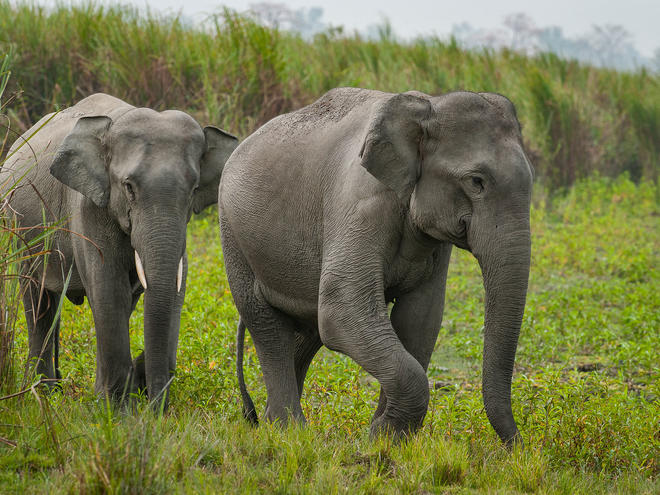Since my last post was about Giraffes, it only seemed right to jump over to the subject of elephants, specifically Asian Elephants. While African Elephants are also struggling, Asian Elephants are taking a much harder hit when it comes to being threatened by multiple factors. Asian elephants are smaller than African elephants, but are still extremely large animals, growing up to 11,000 pounds as adults. They also have smaller tusks than the African elephants, but the male elephants can still grow decent sized tusks. These elephants can be found all throughout southern and southeastern Asia, but lately, their population is in decline, and only 40,000-50,000 remain in the wild, causing them to gain the title of endangered species.
Like many of the animals I have covered before, Asian elephants are suffering greatly from illegal poaching. Even though their tusks are smaller than that of the African elephant, they still sell for large sums of money on the black market. Asian elephants are also illegally taken out of the wild alive as trophies, shown off as tourist attractions. People have taken advantage of these animals and drastically harmed their population.
Even though poaching has decreased the Asian elephant’s population, the factor that has had the most effect is habitat loss. The population of Asian countries are greater than any other place in the world and is growing at a substantial rate, and the more people there are, the more space they take up, and the more forests have to be cut down, drastically reducing the natural habitats of the Asian Elephant.
The loss of natural habitat and the cutting off of migration routes has also caused other devastating factors to the decline of the Asian elephant. Since their habitat has decreased, more elephants have been making their way onto farms and into human settlements, causing them to be killed by farmers and locals trying to protect their land and themselves from the elephants. The elephants are also suffering in another way due to habitat encroachment. As human development cuts through their habitat, elephant populations are split up with no way of reaching each other. This causes the genetic pool to become smaller and issues arise from inbreeding. The smaller isolated groups are also more easily wiped out by things like natural disasters and disease.
The Asian Elephant may not be as large or as well-known as its African cousin, but they are a wonderful animal that does not deserve this population decline. They are not the only species suffering in Southeast Asia, but they serve as a good example of what is happening to animals not only there but across the entire world due to human decisions, and only humans can try to stop any more damage from happening.
